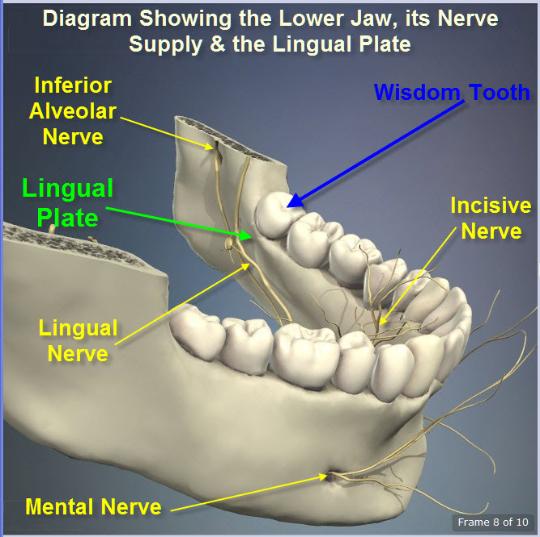Lingual Plate Fracture
The Lingual Plate is the side of the lower jaw tooth socket nearest the tongue. In the region of the lower wisdom tooth (3rd molar), the Lingual Plate can often be very thin.
The Lingual Plate Fracture (and not just with the Lingual Plate but also with the Buccal, Labial & Palatal Cortical Plates) is associated with:
- extraction movements that are abrupt and awkward
- ankylosis (fusing of the tooth with the surrounding bone) of the tooth in the socket (alveolar process)
- horizontally / mesially impacted lower wisdom teeth that have been partially erupted for awhile together with
- low-grade infection associated with them (such as pericoronitis or periodontitis)
- African origin (denser bone)
- more mature patient (sclerotic bone)
- use of chisels / osteotomes, utilised in the decoronating of lower wisdom teeth (Lingual Split Technique used to ‘saucerise the socket’)
- the sudden application of force
- root size (large) and shape (splayed ± bulbous roots)
The plate fragment is often adherent to the wisdom tooth. Dependent on its size, it can be dissected out. The socket will need to be ‘tidied up’ (the archaic term “wound toilet” is used). It is very likely that the Lingual Nerve has been traumatised whilst this is being done. This will result in nerve damage that ranges from numbness of the tongue to ‘pins and needles’ or to loss of taste.






